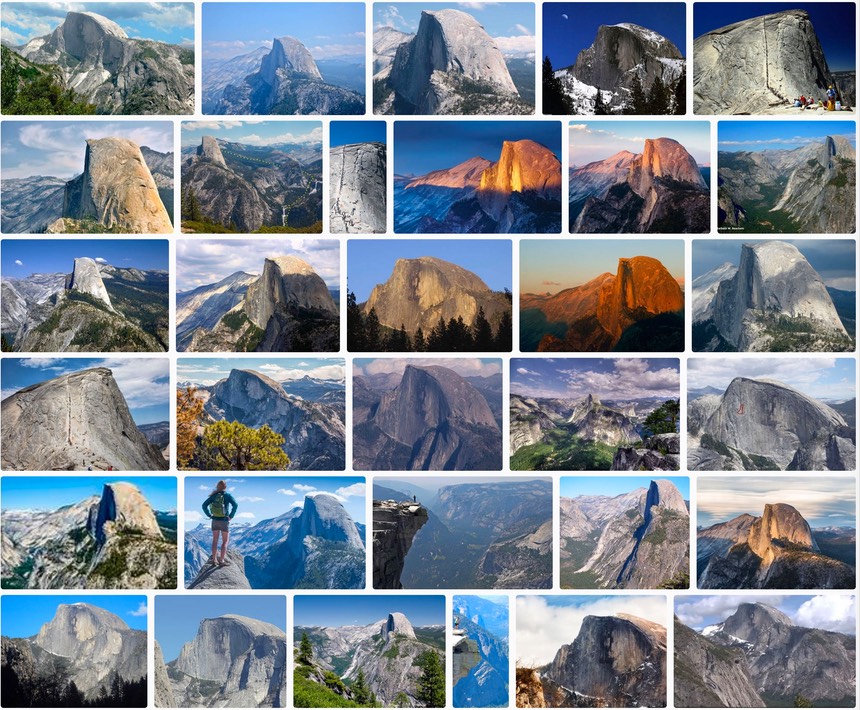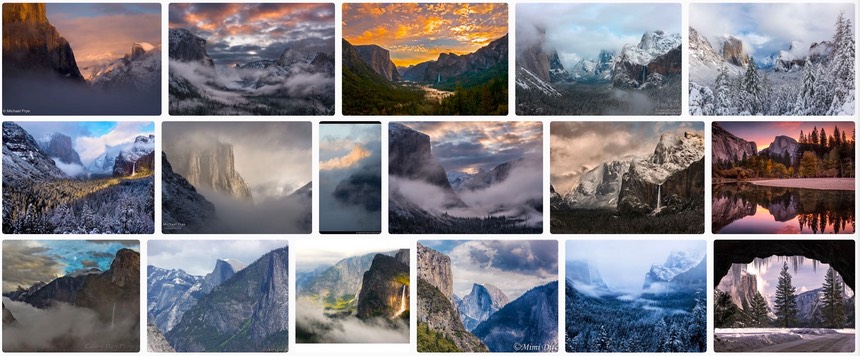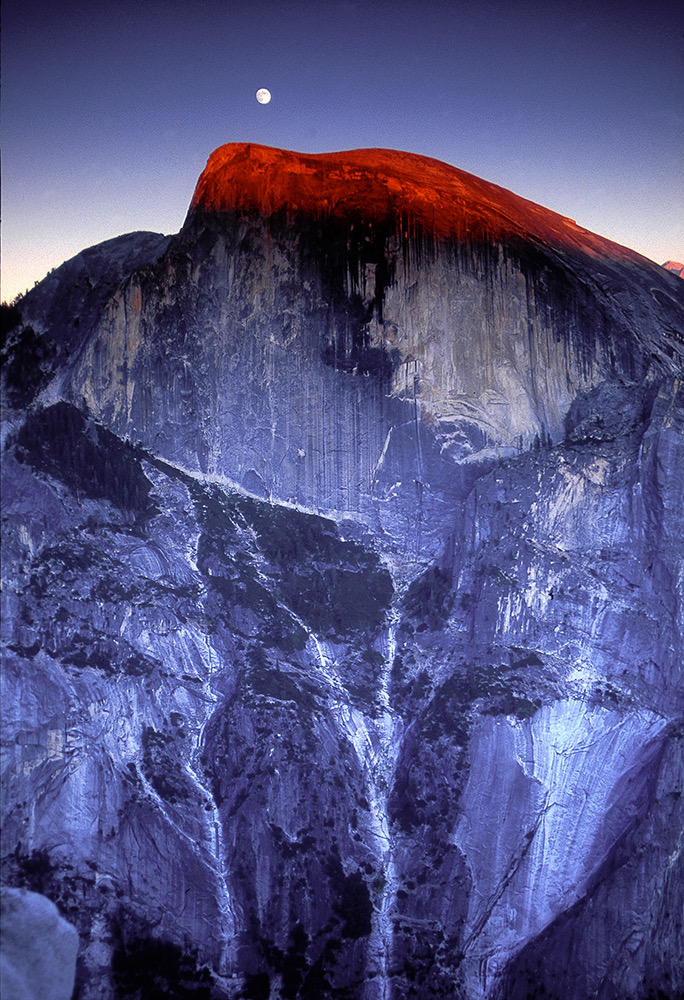A long-term reader recently wrote to me about how they had stalled when it came to shooting landscapes. Some of it was due to restrictions on where he could be (e.g. no off-trail photography is allowed in some areas he visited now), but much of his reaction was due to a sense of "having seen it all."
We all hit plateaus like that if we do something long enough. But is it a summit or a plateau? Too many think that it's a summit and get depressed that there isn't any further to go. This leads to thoughts like the one in the headline: landscape photography is done.
Let's examine that thought, because it's an important one.
A popular place where people like to take landscape photos such as Yosemite National Park gets four to five million visitors a year. Pretty much all of them have cameras, even if that's a smartphone. It's incredible difficult to take a Half Dome photograph you haven't seen already.
Don't believe me? If you do a search for Half Dome and click over to Images instead of Web, you get this kind of result, which scrolls near infinity:

While I picked a well-known landmark here, the same thing pretty much applies to any place where you might practice landscape photography.
Go ahead, try it. Pick a place you like to photograph, type its name into a Web search engine, then switch over to the Images tab. You'll probably see more images than you expect to, and often in a quantity near infinity. In big cities, you can pick pretty much any landmark or building and get the same thing: near infinite results.
Meanwhile, smart landscape photographers use location analysis tools—I've long used The Photographer's Ephemeris—where you can plop down your virtual tripod anywhere in the world and at any time in the present or future to see what the sun and moon are doing, and these days, maybe even see the topographical view and the weather.
These two things—Web image search and location planning tool—taken together pretty much ought to allow you to preconceive of virtually any landscape photo most people would ever take. But that photo has probably already been done.
Don't believe me? Well, here are the top three rows of a search that was for "Half Dome Storm Tunnel View":

That's three search terms together: prominent object (Half Dome), tripod location (Tunnel View), and weather (Storm).
This problem of "having been done" has existed even back into the film days, at least for famous places, even though you might not have been able to see it. When I was Editor at Backpacker at the turn of the century, we'd put out an image request for a trail or place, and we'd end up with dozens of photographers submitting multiple images. Even when we were more specific (e.g. adding "storm") we'd still get a very large lightbox full of images to look at.
And, as you might suspect, many of them were either the same, or at least not particularly distinguished from one other. In my tenure at Backpacker, we always reached for the image that was distinguished, and that's where we start to get the answer to the headline's question.
No, landscape photography is not done, but it's getting tougher and tougher to do something that stands out solely in terms of technique or place.
If you think about it, panorama, HDR, infrared, and a number of other specialized photographic techniques were all attempts to stand out. I know one pro who spent a year traveling around with top-end MF digital gear doing panos and waiting for the right light/moment at each location so that he could have a gallery full of images that made the rest of ours look weak and anemic. My 24" prints look a bit lame compared to his six-foot wide, higher-resolution prints taken on the same trip. Doh!
But that was about precision and craftsmanship as much as anything else (the MF gear and highly refined support and pano tools).
Lately, we've had some other attempts to stand out, most notably with landscape astrophotography and drone landscapes. Don't believe me? Here are the first two rows of the infinite scrolling image search for "Half Dome Stars":

Yep, someone's been there, done that.
So how exactly do you stand out?
The same way many do in real life: become a storyteller.
Whether you think it does or not, every photograph you take will tell the viewer a story. What you don't want that story to be is something like "I'm lazy and took this from my car" or "I did the same thing as (many) others."
I'm a big fan of naming your photographs (and before you take them!). And not just naming them with nouns (e.g. Half Dome). I want full on sentences with adjectives and modifiers whenever possible.
Since I'm using Half Dome as an example, here's my photograph of Moon and Half Dome (Ansel Adams' name for his photograph taken from the same ridge, which note is noun and noun). I call this image Half Dome dominates the Moon:

You might have noticed that one word ("dominates") dictates the whole composition and tells (nearly) the full story.
I'll leave you (for now) to do your own thinking about landscapes. Are you a noun noun photographer as Ansel Adams often was? Or are you trying to tell a story to the eventual viewers of your image? I hope I'm the latter. I'd suggest you be, too.
One of my mentors, Galen Rowell, used to speak about the "emotion" of a photograph. He wanted students to capture the feeling they had when they were someplace interesting or unique. Stories are our way of telling others what that emotion was. Stories are the most powerful tool mankind has invented. Don't you want to use the best possible tool?
The tricky part is this: it's your story to tell, not the viewer's job to try to figure out. So:
- Know what your story is.
- Capture only that story in your image.
Start with simple stories, then get more complex. I'm pretty sure you'll find landscape photography challenging and fun again.
